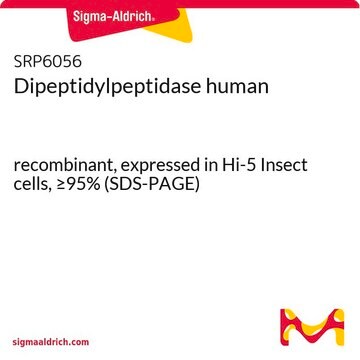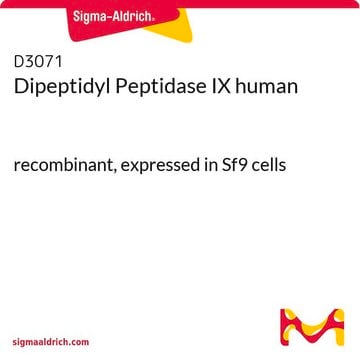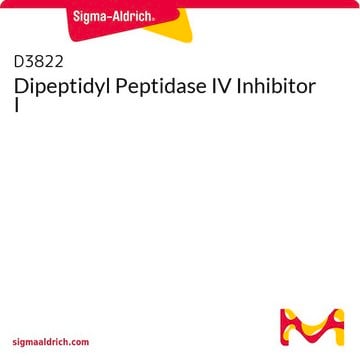D4943
Dipeptidyl Peptidase IV human
recombinant, expressed in baculovirus infected Sf9 cells, pkg of ≥1.0 units/vial, ≥10 units/mg protein
Synonym(s):
CD26, DPPIV, Dipeptidyl aminopeptidase IV, Glycoprotein GP110
About This Item
Recommended Products
recombinant
expressed in baculovirus infected Sf9 cells
form
solution
specific activity
≥10 units/mg protein
mol wt
105 kDa
packaging
pkg of ≥1.0 units/vial
UniProt accession no.
shipped in
wet ice
storage temp.
−20°C
Gene Information
human ... DPP4(1803)
Looking for similar products? Visit Product Comparison Guide
General description
Application
Biochem/physiol Actions
Unit Definition
Physical form
Other Notes
inhibitor
substrate
Storage Class Code
10 - Combustible liquids
WGK
WGK 1
Flash Point(F)
Not applicable
Flash Point(C)
Not applicable
Certificates of Analysis (COA)
Search for Certificates of Analysis (COA) by entering the products Lot/Batch Number. Lot and Batch Numbers can be found on a product’s label following the words ‘Lot’ or ‘Batch’.
Already Own This Product?
Find documentation for the products that you have recently purchased in the Document Library.
Customers Also Viewed
Our team of scientists has experience in all areas of research including Life Science, Material Science, Chemical Synthesis, Chromatography, Analytical and many others.
Contact Technical Service








